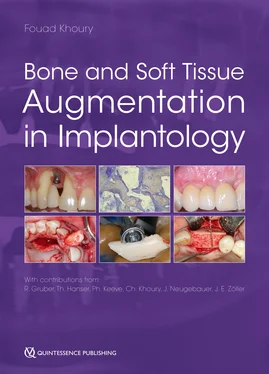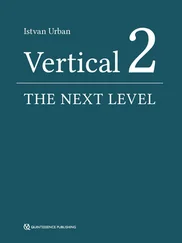103. Schmitz JP, Hollinger JO. The critical size defect as an experimental model for craniomandibulofacial nonunions. Clin Orthop Relat Res 1986:299–308.
104. Schropp L, Wenzel A, Kostopoulos L, Karring T. Bone healing and soft tissue contour changes following single-tooth extraction: a clinical and radiographic 12-month prospective study. Int J Periodontics Restorative Dent 2003;23:313–323.
105. Scvhwarze UY, Strauss FJ, Gruber R. Caspase inhibitor attenuates the shape changes in the alveolar ridge following tooth extraction: A pilot study in rats. J Perio Res (in press).
106. Seeman E. Bone modeling and remodeling. Crit Rev Eukaryot Gene Expr 2009;19:219–233.
107. Seeman E, Delmas PD. Bone quality – the material and structural basis of bone strength and fragility. N Engl J Med 2006;354:2250–2261.
108. Sennerby L, Meredith N. Implant stability measurements using resonance frequency analysis: biological and biomechanical aspects and clinical implications. Periodontol 2000 2008;47:51–66.
109. Shoji-Matsunaga A, Ono T, Hayashi M, Takayanagi H, Moriyama K, Nakashima T. Osteocyte regulation of orthodontic force-mediated tooth movement via RANKL expression. Sci Rep 2017;7:8753.
110. Shokri T, Stahl LE, Kanekar SG, Goyal N. Osseous changes over time in free fibular flap reconstruction. Laryngoscope 2019;129:1113–1116.
111. Simonet WS, Lacey DL, Dunstan CR, et al. Osteoprotegerin: a novel secreted protein involved in the regulation of bone density. Cell 1997;89:309–319.
112. Sims NA, Martin TJ. Coupling the activities of bone formation and resorption: a multitude of signals within the basic multicellular unit. Bonekey Rep 2014;3:481.
113. Singer AJ, Clark RA. Cutaneous wound healing. N Engl J Med 1999;341:738–746.
114. Sirinoglu H, Cilingir OT, Celebiler O, Ercan F, Numanoglu A. The effect of liquid nitrogen on bone graft survival. Facial Plast Surg 2015;31:401–410.
115. Springer IN, Terheyden H, Geiss S, Harle F, Hedderich J, Acil Y. Particulated bone grafts – effectiveness of bone cell supply. Clin Oral Implants Res 2004;15:205–212.
116. Strauss FJ, Kuchler U, Kobatake R, Heimel P, Tangl S, Gruber R. Acid bone lysates reduces bone regeneration in rat calvaria defects (in review).
117. Strauss FJ, Stahli A, Beer L, et al. Acid bone lysate activates TGFbeta signalling in human oral fibroblasts. Sci Rep 2018;8:16065.
118. Suda T, Takahashi N, Udagawa N, Jimi E, Gillespie MT, Martin TJ. Modulation of osteoclast differentiation and function by the new members of the tumor necrosis factor receptor and ligand families. Endocr Rev 1999;20: 345–357.
119. Sun Q, Li Z, Liu B, Yuan X, Guo S, Helms JA. Improving intraoperative storage conditions for autologous bone grafts: an experimental investigation in mice. J Tissue Eng Regen Med 2019;13:2169–2180.
120. Tatsumi S, Ishii K, Amizuka N, et al. Targeted ablation of osteocytes induces osteoporosis with defective mechanotransduction. Cell Metab 2007;5:464–475.
121. Teitelbaum SL, Ross FP. Genetic regulation of osteoclast development and function. Nat Rev Genet 2003;4:638–649.
122. Timmen M, Hidding H, Wieskotter B, et al. Influence of antiTNF-alpha antibody treatment on fracture healing under chronic inflammation. BMC Musculoskelet Disord 2014;15:184.
123. Torreggiani E, Matthews BG, Pejda S, et al. Preosteocytes/osteocytes have the potential to dedifferentiate becoming a source of osteoblasts. PLoS One 2013;8:e75204.
124. Triplett RG, Schow SR. Autologous bone grafts and endosseous implants: complementary techniques. J Oral Maxillofac Surg 1996;54:486–494.
125. Tsuji K, Bandyopadhyay A, Harfe BD, et al. BMP2 activity, although dispensable for bone formation, is required for the initiation of fracture healing. Nat Genet 2006; 38:1424–1429.
126. Tsuji K, Cox K, Bandyopadhyay A, Harfe BD, Tabin CJ, Rosen V. BMP4 is dispensable for skeletogenesis and fracture-healing in the limb. J Bone Joint Surg Am 2008;90(suppl 1):14–18.
127. Tsuji K, Cox K, Gamer L, Graf D, Economides A, Rosen V. Conditional deletion of BMP7 from the limb skeleton does not affect bone formation or fracture repair. J Orthop Res 2010;28:384–389.
128. Uitterlinden AG, Arp PP, Paeper BW, et al. Polymorphisms in the sclerosteosis/van Buchem disease gene (SOST) region are associated with bone-mineral density in elderly whites. Am J Hum Genet 2004;75: 1032–1045.
129. van Bezooijen RL, Roelen BA, Visser A, et al. Sclerostin is an osteocyte-expressed negative regulator of bone formation, but not a classical BMP antagonist. J Exp Med 2004;199:805–814.
130. van Bezooijen RL, ten Dijke P, Papapoulos SE, Lowik CW. SOST/sclerostin, an osteocyte-derived negative regulator of bone formation. Cytokine Growth Factor Rev 2005;16:319–327.
131. Vasak C, Busenlechner D, Schwarze UY, et al. Early bone apposition to hydrophilic and hydrophobic titanium implant surfaces: a histologic and histomorphometric study in minipigs. Clin Oral Implants Res 2014;25: 1378–1385.
132. Waechter J, Madruga MM, Carmo Filho LCD, Leite FRM, Schinestsck AR, Faot F. Comparison between tapered and cylindrical implants in the posterior regions of the mandible: a prospective, randomized, split-mouth clinical trial focusing on implant stability changes during early healing. Clin Implant Dent Relat Res 2017;19:733–741.
133. Wang EA, Rosen V, Cordes P, et al. Purification and characterization of other distinct bone-inducing factors. Proc Natl Acad Sci U S A 1988;85:9484–9488.
134. Watson EC, Adams RH. Biology of bone: the vasculature of the skeletal system. Cold Spring Harb Perspect Med 2018;8: a031559.
135. Wu AC, Raggatt LJ, Alexander KA, Pettit AR. Unraveling macrophage contributions to bone repair. Bonekey Rep 2013;2:373.
136. Xiao WL, Zhang DZ, Chen XJ, Yuan C, Xue LF. Osteogenesis effect of guided bone regeneration combined with alveolar cleft grafting: assessment by cone beam computed tomography. Int J Oral Maxillofac Surg 2016;45:683–687.
137. Xie H, Cui Z, Wang L, et al. PDGF-BB secreted by preosteoclasts induces angiogenesis during coupling with osteogenesis. Nat Med 2014;20:1270–1278.
138. Xiong J, Onal M, Jilka RL, Weinstein RS, Manolagas SC, O’Brien CA. Matrix-embedded cells control osteoclast formation. Nat Med 2011;17:1235–1241.
139. Xiong J, Piemontese M, Onal M, et al. Osteocytes, not osteoblasts or lining cells, are the main source of the RANKL required for osteoclast formation in remodeling bone. PLoS One 2015;10:e0138189.
140. Xiong J, Piemontese M, Thostenson JD, Weinstein RS, Manolagas SC, O’Brien CA. Osteocyte-derived RANKL is a critical mediator of the increased bone resorption caused by dietary calcium deficiency. Bone 2014;66: 146–154.
141. Yuasa M, Mignemi NA, Nyman JS, et al. Fibrinolysis is essential for fracture repair and prevention of heterotopic ossification. J Clin Invest 2015;125:3117–3131.
142. Zhang X, Schwarz EM, Young DA, Puzas JE, Rosier RN, O’Keefe RJ. Cyclooxygenase-2 regulates mesenchymal cell differentiation into the osteoblast lineage and is critically involved in bone repair. J Clin Invest 2002;109: 1405–1415.
143. Zielins ER, Atashroo DA, Maan ZN, et al. Wound healing: an update. Regen Med 2014;9:817–830.
2
Diagnosis and planning of the augmentation procedure
2.1 Introduction
The aim of implant prosthetic rehabilitation is the integration of fixed or removable dental prostheses. Therefore, it is necessary to set up a treatment plan that considers the individual findings according to the result expected by the patient. It is important to define the surgical, prosthetic, and dental technical effort to achieve a functional and esthetic result. The amount of surgical effort required depends on the available bone and soft tissue. This effort is necessary both before and during implant insertion in order to achieve a long-term stable prosthetic result. To achieve an optimal result, detailed planning is as important as a complication-free reconstruction of the atrophied jaw and prosthetically oriented implant placement, which requires proper training in all treatment steps. 93
Читать дальше












